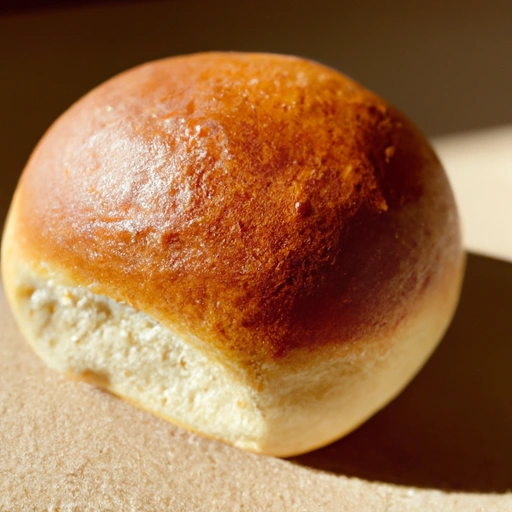Roll
Description

A roll refers to a small, usually round or oblong individual loaf of bread served as a meal accompaniment. The size and composition of a roll can vary, but it typically contains flour, water, salt, yeast, and sometimes additional fats such as butter or oil. Rolls can be found across various cultures and are known for their versatility and ability to complement a wide range of dishes.
Common uses
Rolls are commonly used as a side to complement meals, to make sandwiches, or as a base for various appetizers. They are often served warm with butter and can be used to mop up sauces or gravies. Additionally, rolls are a popular choice for breakfast sandwiches or as a snack throughout the day.
Nutritional value
Calories
A typical white bread roll (approximately 1 oz or 28 grams) contains around 85 calories (355 kilojoules).
Protein
Each roll provides approximately 2 to 3 grams of protein, depending on the size and ingredients used.
Fat
Most rolls contain about 1 gram of fat, though this can increase if fats like butter are added to the recipe.
Carbohydrates
Carbohydrates are the primary source of energy in rolls, with a standard roll containing about 15 grams of carbohydrates.
Vitamins
Rolls may contain small amounts of B vitamins, particularly if they are made with whole grains or are enriched with vitamins.
Minerals
Depending on the flour used, rolls can offer minerals such as iron, selenium, and magnesium.
Health benefits
Whole grain rolls can contribute to a healthy diet by providing dietary fiber, which aids in digestion and can help to maintain blood sugar levels. The B vitamins present in some rolls are important for energy metabolism and nervous system function.
Potential risks
Consuming rolls made from refined white flour can lead to spikes in blood sugar and may contribute to weight gain if eaten in excess. Those with gluten intolerance or celiac disease should avoid rolls containing wheat, barley, or rye.
Common recipes
Rolls are used in a multitude of recipes including sliders, dinner rolls, sandwich buns, and as an accompaniment to soups and salads.
Cooking methods
Rolls can be baked, steamed, or even fried depending on the desired texture and recipe requirements. They can range from crusty and chewy to soft and light.
Pairing with other ingredients
Rolls pair well with a variety of foods, including meats, cheeses, spreads, and jams. They are also often used in bread baskets alongside other types of bread.
Summary
Rolls are a versatile baked good that serve as a staple in many diets around the world. With a variety of types available, rolls can be integrated into numerous meals and recipes. Whether used as a vehicle for sandwiches or as a simple side to a main dish, rolls offer both nutritional value and comfort food appeal. Despite potential risks for those with gluten sensitivities or concerns about refined carbohydrates, rolls can be part of a balanced diet, particularly when chosen in their whole grain form.